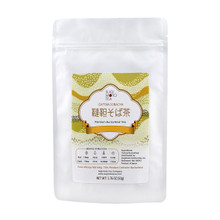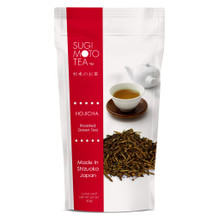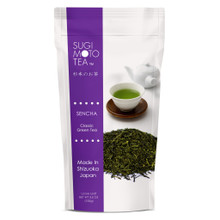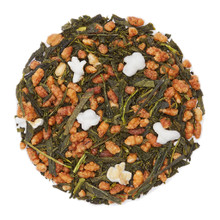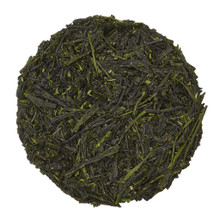Japanese Tea Ceremony Guide Part 2: Philosophy And Tea Schools
In Part 2 of our Japanese tea ceremony guide, you’ll learn more about the philosophies behind the tea ceremony and the tea schools that practice it.
Guide Contents:
Japanese Tea Ceremony Philosophy | Zen Roots and Tea Schools that Practice It
Why Is the Tea Ceremony Often Associated With Zen?
The Japanese tea ceremony is deeply rooted in Zen Buddhism so it’s impossible to talk about tea practice without mentioning Zen. Influential figures like Murata Juko, Takeno Joo, and Sen no Rikyu, who were all followers of Zen, all integrated Zen concepts and philosophies in their development of the practice of tea.
Here’s an explanation of each and how they were integrated into the development of the tea ceremony.
和敬清寂 Wa Kei Sei Jaku (Harmony, Respect, Purity, Tranquility)
These four values were instilled by Murata Juko, with Sen no Rikyu building upon it later on.
- Harmony 和 — In the rite of tea, this is represented by which utensils are used and how the space is arranged.
- Respect 敬 — Mutual respect is expected from both the host and the guests.
- Purity 清 — This is shown in the cleanliness of the space and the utensils used. The simple act of cleaning the space and the utensils can also help prepare one’s heart for the ceremony.
- Tranquility 寂 — This state of calm can be attained by working to achieve the first three values.
Sen no Rikyu’s Rules for the Tea Ceremony
Sen no Rikyu built upon the values introduced by Murata Juko and shows how much preparation and thought goes into a Japanese tea ceremony. His seven rules are still used as a framework for tea ceremonies today.
- Make a delicious cup of tea — A straightforward rule with no further guidelines, which may suggest that the underlying message speaks more about being a good, hospitable host than simply focusing on the technical aspect of preparing tea.
- Lay charcoal for water to boil — The right arrangement of the charcoal can ensure that the ceremony is timely and flows smoothly.
- Arrange flowers as if they are in nature — This speaks about the longing to become in harmony with nature. It also talks about respecting nature: the flowers may have been picked from the land and it’s impossible to return them, so to show respect, display it as if it was in nature.
- Provide coolness in the summer and warmth in the winter — While nature can’t be controlled, a good host can make adjustments to improve guest experience despite the weather or season. For example, the ro or hearth is used in the winter to keep the water hotter for a longer period and to warm the room.
- Be ready ahead of time — Related to mutual respect, both parties should be ready in time for the tea ceremony. This also shows that they value time as something to be cherished.
- Prepare for rain — These days, with weather forecasting more accurate than in Sen no Rikyu’s time, this can be interpreted more figuratively than literally. This talks about the value of preparing for things that may suddenly come up.
- Be considerate — This can be expressed in simple ways, such as thanking the host for taking the time and effort to prepare the tea.
Wabi
Different texts throughout history have offered varying interpretations of wabi. Early interpretations of it saw it as loneliness, sadness, and living a reclusive life detached from society. However, it later evolved into something more positive, representing simplicity, humility, being free from materialism, and being in harmony with nature.
Wabi shaped some of the biggest transformations in the tea ceremony, particularly with finding appreciation in simplicity and sparsity. Through it, lavish teaware fell out of favor for more rustic teaware and smaller, simpler tearooms with fewer items being favored over large, more ornate spaces filled with lavish pieces.
Ichi Go Ichi E
Takeno Joo is believed to have been responsible to associate this concept with tea. Loosely translated as “one life, one encounter,” it’s a call for guests to immerse themselves in the experience of tea and appreciate each moment since it’s all unique to that experience. Each tea ceremony is unique, and the experience you get from each can’t be replicated by another.
How Do the Tea Schools Differ?
The Sansenke (Urasenke, Omotesenke, and Mushanokōjisenke) tea schools all conduct the tea ceremony according to Sen no Riyku’s teachings. Each school differs in some way, whether in the technique they use to whisk matcha or the aesthetic characteristics of the utensils they use. Here’s a guide on each of these tea schools.
Urasenke
The Urasenke school of tea was founded by Senso Soshitsu, Sen no Rikyu’s great-grandson. He inherited the property that had the Konnichian tea hut. This was where he established a new household separate from his brother Sosa, who founded the Omotesenke school.
Currently, Soshitu’s descendants are still the heads of the Urasenke school. The Urasenke school has followers worldwide and has a presence in six continents. The Urasenke school has, by far, been the biggest promoter of Japanese tea ceremony outside of Japan, so most practitioners in other countries are followers of this tea school.
What Makes Urasenke Tea Ceremonies Unique?
One of the things that makes Urasenke unique from other schools is how they make the tea. Urasenke followers whisk the matcha more vigorously to create a tea served that has lots offoamand finer bubbles, similar to the consistency of cappuccino.
In terms of utensils, Urasenke followers use a light-colored chasen made from untreated bamboo.
Utensils may also be more ornate compared to those used in Omotesenke utensils (which tend to be simpler) to impress guests. This is because, above all, the Urasenke school prioritizes the guests’ satisfaction.
It’s also not unusual to see an Urasenke tea ceremony conducted with a table and chairs, especially in venues other than tearooms. This setup is called “ryurei,” or “standing bow,” which was created by Urasenke follower Gengensai Seichu Soshitsu as a way to make foreigners more comfortable during the tea ceremony at the 1872 International Exposition. Again, this shows how much the Urasenke school places a high value on the satisfaction of its guests and its desire to spread Japanese tea ceremony across the globe.
Omotesenke
The second biggest of the tea schools is Omotesenke, which was founded by another of Sen no Rikyu’s great-grandsons, Koshin Sosa. The school’s teahouse is called Fushin’an.
His 14th generation descendant, Jimyosai Sosa, currently heads the school. Like Urasenke, Omotesenke also has branches outside Japan.
While Urasenke practitioners vigorously whisk to create a frothy tea, Omotesenke students don’t, which gives the tea just a little foam on the top, with a smooth area in the middle free from foam.
In terms of utensils, you’ll find chasens made from darkened or smoked bamboo in tea ceremonies from Urasenke followers. Their selection of utensils may also be simpler compared to those in Urasenke tea ceremonies since Omotesenke values simplicity. This allows each utensil to receive the same amount of attention and not get overshadowed by a more ornate piece.
Mushanokōjisenke
The Mushanokōjisenke school was founded by Ichio Soshu. Prior to establishing the tea school, he worked as a lacquer artisan. Upon encouragement from his brothers, he returned and built the Kankayuan teahouse.
One of the unique things about this school’s tea ceremonies is its choice of chasen. Mushanokōjisenke practitioners use chasens made from naturally purple or green bamboo. The tea they produce is similar to that of what Omotesenke followers make — no bubbles.
Today, Ichio Soshu’s descendants Futetsusai Soshu and Zuiensai So’oku, head the school. Compared to the two other Sen schools, Mushanokōjisenke has the smallest following and doesn’t have international branches yet. At present, they have seven branches in Japan.
Stay tuned for Part 3 of our Japanese Tea Ceremony Guide series. Learn more about what you will see and experience during a tea ceremony in the next part of this series — Japanese Tea Ceremony Guide Part 3: What to Expect When Attending a Tea Ceremony.
Missed Part 1 of the series? Read Japanese Tea Ceremony Guide Part 1: History!
Additional References:
[1] Zavadckyte, S. (2017). Japanese Tea: A Comprehensive Guide [Amazon Kindle]. Retrieved from Amazon.
[2] Okazura, K. The Zen of Tea [Amazon Kindle]. Retrieved from Amazon.
READ NEXT: Matcha 101: The Tea Maker’s Guide to Japanese Matcha















